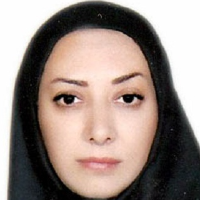Effect of light stimulators and UV on vegetative growth and morphological characteristics of the plant Artemisia aucheri Boiss. under laboratory culture
The traits and morphological characteristics of plants have a great impact on plant taxonomy and classification, so it is important to study these changes due to the impact of climatic factors. Climate factors can have impact on vegetative growth and the morphology of plants. One of the climatic factors is light, which will have a different effect on plant growth and morphology, based on the amount of light intensity and plant type. Investigating the effect of light with different intensities in a plant can help determine the proper light for that plant. Our goal in this paper was investigate the effect of light with different frequencies on growth of the plant Artemisia aucheri Boiss.Artemisia aucheri Boiss. Or Artemisia is a plant that is of family Asteraceae that has a large dispersal in northern Iran. This plant has different healing properties and thus it´s necessary examining and performing various experimental activities on the plant. As mentioned, the aim of this study was to investigate the changes in growth, against different light irradiation and UV radiation on this plant thus the effect of light with different frequencies on vegetative growth of Artemisia(Artemisia aucheri Boiss.), as well as the effect of UV rays with a wavelength of 320 nm, was investigated.
For culture, Murashing and Skoog solid culture was used, without growth regulators. Culture medium was under sterile conditions, the temperature of 2 ±25 and different light conditions with different treatments. Lighting conditions was used of optical radiation 1000, 2000 and 3000 lux. In addition it was assumed radiation treatments UV and treatment of darkness. This experiment was repeated several times over a period of five months, with repeated repetitions, to prevent the possibility of a possible error. Each time the experiment was repeated, with three replicates of the treatments, and in addition, the apparent variation of plant changes, fresh and dry weight of the plants harvested, recorded and compared. For analyzing data of software SPSS version 20 and Excel programs were used. During the experiment, the resulting data, the average of three replicates ± SD and results based on one-way ANOVA test, Tukey test and a significant difference on the P ≤ 0.05, were investigated.
The results of the effect of light on fresh and dry weeds of seedlings showed that light radiation with different intensities caused a significant difference also UV rays can affect the fresh and dry weight of the plant. According to statistical analysis results between wet and dry weights of all samples, there was a direct relationship. However, the largest amount of fresh and dry weight of the seedlings was observed in treatment 3, the irradiation of 3000 lux treatments with all treatments and control treatments showed significant differences. Morphological changes were observed by UV treatment. Changes in the apparent symptoms of the plant due to the use of radiation can be expressed as deformation and color of leaves, leaf drying, cholorosis and necrosis in leaves (decreasing chlorophyll content), increasing leaf and stem thickness, decreasing stem elongation and root. The absence of light affects the outer shape of the plant, and its longitudinal growth rate. Plants that were in an environment without light usually had long, narrow stalks. However, the stems were yellow, but much longer and thinner than other treatments. The leaves did not spread much and were yellow. The plants that grew in the dark have a formidable appearance. Their shoots were longer and their diameter was smaller and pale. Increasing fresh and dry calluses in this treatment showed a significant difference with all treatments, and the weight gain was higher than the rest, except for 3000 lux. On the other hand, the colors of the calluses were creamy to the color of the coffee, and more were slim and sticky. Some parts of the callus were purple.
One of the most important environmental conditions affecting plant growth and how it affects is light conditions. According to the information obtained, the intensity of light irradiation increases, the growth rate and plant density are improved and the plant weight is increased. The best lighting conditions in this experiment is 300 lux, the longitudinal growth and transverse growth of the plant, the better and even on root growth the impact a lot. Ray of UV the shape plant and root growth and stem of the plant was effective. With regard to the study of the irradiation of more than 3,000 lux in this experiment, it is suggested that higher radiation for this plant should be investigated in subsequent studies.
Artemisia aucheri , Light , Morphology , UV ray , wormwood
- حق عضویت دریافتی صرف حمایت از نشریات عضو و نگهداری، تکمیل و توسعه مگیران میشود.
- پرداخت حق اشتراک و دانلود مقالات اجازه بازنشر آن در سایر رسانههای چاپی و دیجیتال را به کاربر نمیدهد.


